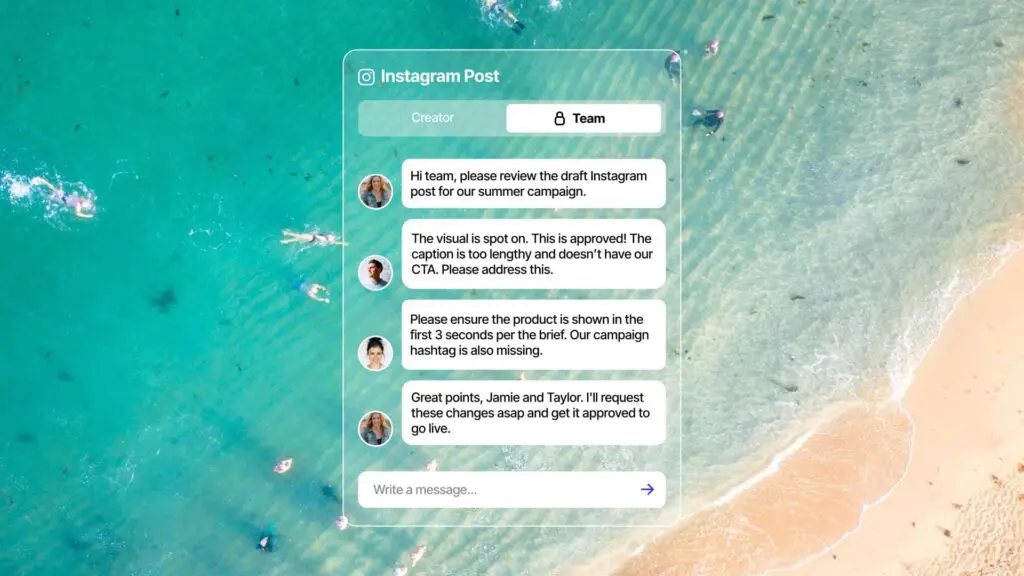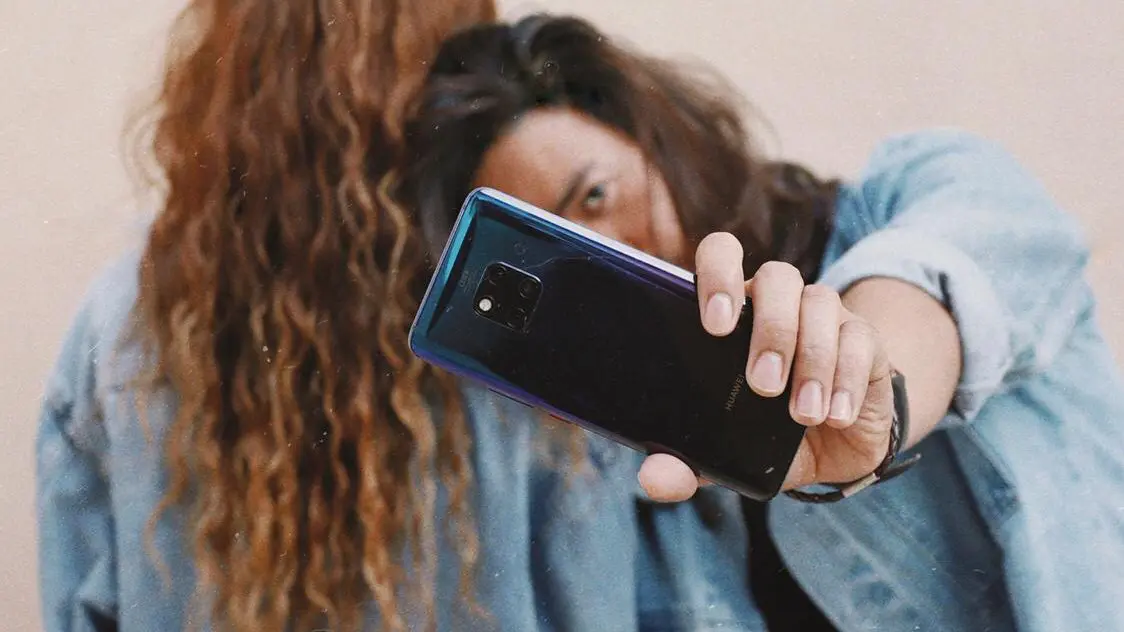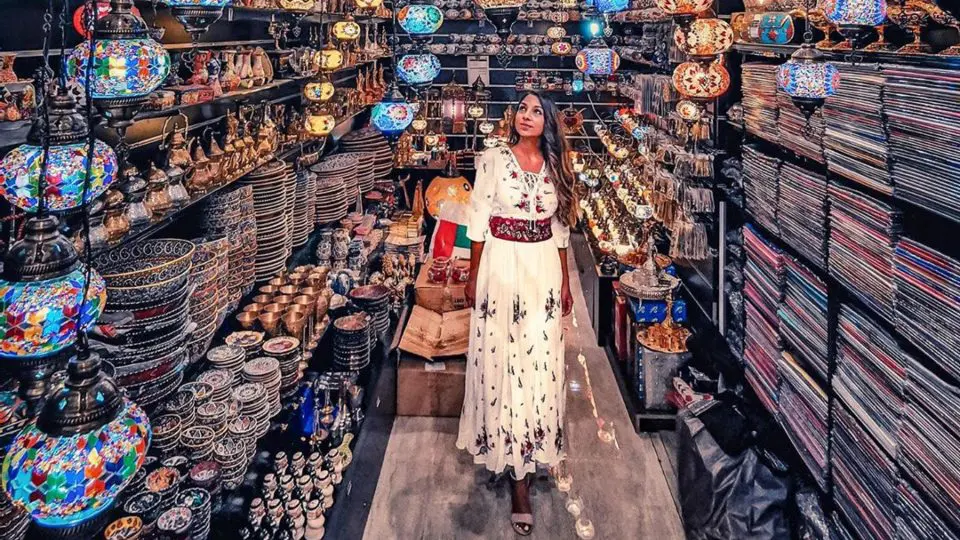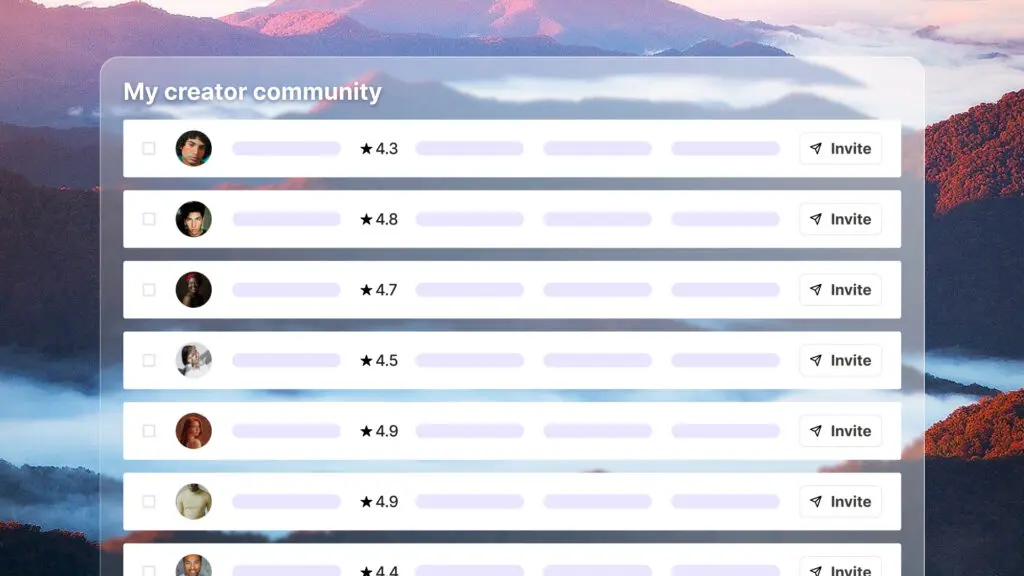

It’s a tough question to answer these days as the two have become so dependent on each other.
The rise of the influencer led to a rapid growth of e-commerce as it enabled brands to communicate directly with their customers in a way that wasn’t possible before Mark Zuckerberg decided to experiment with something called TheFacebook in the early noughties.
Any robust e-commerce marketing campaign now needs to include influencer marketing. In 2022, 39% of marketers invested up to 20% of their marketing budget on influencer marketing, spending $4.14 billion in the US alone.
In 2023, 67% of firms plan to increase their influencer marketing spend, and Business Insider has predicted that influencer marketing will be worth $15billion in 2024.

Influencer marketing occurs when brands ask influencers, i.e. those with a strong social media following, to promote their products or services. It works because influencer audiences are, or at least should be, highly engaged, much more so than if you embarked on a paid-for digital advertising campaign, even if you carefully selected the target demographic.
An influencer is somebody with a strong following on social media. They can be anyone from Cristiano Ronaldo (who commands a budget-busting £1.2 million per post), through to a micro-influencer – somebody with a much smaller following (10K–100K), who will charge a lot less but still come with a highly engaged audience.
While micro-influencers generally start at around £400 per Instagram post, some with smaller followings will promote your brand for nothing, in exchange for free products.
Choosing to work with an influencer gives you a hotline to your target audience – people who are likely to be interested in your brand. When AdRoll conducted a survey on social media behaviour, they found that 82% of respondents aged 18–44 bought something following an influencer’s recommendations.
Collaborating with the right influencer, one who embodies your brand values, operates within the same industry, and is trusted by followers, can be like rocket fuel to your marketing campaign. It can spark interest, add kudos, and introduce authenticity to your promotional strategy.
In addition to increasing brand awareness and endorsing products, influencers can create engaging and creative content that resonates with people.

Some influencers work via an agency or have an agent, while others are lone operators, but whichever way you work with them, remember that they’re individuals and not organiations. This comes with certain challenges.
They may not deliver as promised; they could be difficult to get hold of; and you might find yourself pestering them to post your content. For this reason, establishing good communication is a must. Outline the non-negotiables at the start of the project and make it clear if there’s a schedule/timeline that needs to be followed.
You also need to bear in mind that social media users are savvy and don’t like influencer marketing that’s too obvious. If it’s clear that an influencer is purely plugging a brand for the money, this may well prove a turn-off for followers. Recently, de-influencing has become a thing. This movement sees Gen Z trying to reclaim their spending power. They’re rebelling against things like diet culture, unrealistic beauty ideals, and consumerism.
To avoid this bump in the road, it pays to choose your influencer carefully. Pick someone who is trusted, ethically sound, and genuinely has an interest in your brand regardless of the pay cheque. 88% of Gen Z and Millennials say that authenticity is key when it comes to the influencers they follow.
Pay attention to engagement rates, i.e. the number of likes, comments, and views that an influencer gets for their content. A high engagement rate means that followers are really plugged into what an influencer is saying.
Finally, don’t put all your eggs in the influencer basket. Plan a digital campaign that includes some paid for advertising, SEO, and perhaps even some PR.

92% of marketers think that influencer marketing is effective and 50% of Millennials trust brand recommendations from influencers. In fact, influencers are now more trusted as spokespeople than actual celebrities. Given that a third of Gen Z say they buy products based on influencer recommendations, it’s fair to say that influencer marketing works.
Before you set out to find your influencers, you need to work out the budget and decide which type of influencers you want to collaborate with. There are four categories according to impact.com and and you expect to pay the following per Instagram post:
If you have a limited budget and are doing the research yourself, you need to whittle down the vitals – what’s the age of your target audience; which platform are they most likely to use; what’s your niche; and which creatives within your industry share your brand values, have good engagement levels and have a great reputation?
Interestingly, according to HubSpot, brands are now switching from mega-influencers to those with a smaller following. 80% of marketers use influencers with under 100K followers and only 16% work with those who have more than a million.
If you want help finding the right influencer, Vamp is your ideal partner. It’s a comprehensive platform with a treasure-trove of tools that make it much easier to find and collaborate with influencers, manage campaigns and track return on investment (ROI).
Every creator on the Vamp platform has been hand selected, so you know you’re only dealing with genuine influencers. You can also consolidate your entire strategy from your influencer communications through to budget planning, media value calculations, and anticipated engagement metrics.
Creator rates are transparent, you can manage all your outreach from Vamp and we can give you a targeted, recommended list of influencers who fit the brief and align with your brand. If you want to execute your influencer marketing campaign like a pro, Vamp can’t be beaten.

Below are the top channels for influencer marketing, with the percentage of marketers who use them.
Top influencer marketing channels
When choosing a platform for influencer marketing, consider the demographic of each one and which is most suitable for your brand’s niche.
A third of marketers say they get their best ROI using Instagram influencers.
To learn more, take a look at our guide to Instagram strategy
According to a survey by Hubspot, 58% of marketers work with YouTube influencers and 20% say it has the highest ROI.
For more information, check out our guide on TikTok influencer marketing.
Check out our ultimate guide to social media strategy to kick-start your digital marketing campaign.

Begin your influencer marketing strategy by identifying your goals and working out a budget. Goals can be anything from increasing brand awareness, through to increasing social media following, building engagement, and driving sales.
Next, choose the type of campaign or campaigns that would work for your brand. These can include:
Work out the messaging. Remember, you don’t want to try too hard to sell your brand. The tone should be conversational with an accent on fun, and you need to make sure that your chosen influencers reflect your core brand values.
When you’re clear on what you want and how you aim to achieve it, start reaching out to influencers, either by doing your own research or using a platform like Vamp.
A checklist to use when picking influencers should include:
When you find the right influencer, remember that they have their own particular style, so try to resist the urge to micromanage. Strike the right balance.
If you identified your goals before starting your influencer marketing campaign, you should have a clear idea of which metrics to track. If you have more than one influencer working on your campaign, it might be an idea to use an all-in-one platform like Vamp to track metrics accurately.
Here are some examples of the metrics you could consider analyzing to see how your campaign is working:
When you find an influencer who generates the results you’re hoping for, develop a trusted relationship with them as the more they vouch for your brand, the stronger the message. A follower is far more likely to buy a product that their favourite influencer has mentioned several times than one that was only featured once.
Ready to begin your influencer marketing strategy? Get started with Vamp. Select your budget and find out how we can help you boost your digital marketing campaign.



| Cookie | Duration | Description |
|---|---|---|
| __cf_bm | 30 minutes | This cookie, set by Cloudflare, is used to support Cloudflare Bot Management. |
| _abck | 1 year | This cookie is used to detect and defend when a client attempt to replay a cookie.This cookie manages the interaction with online bots and takes the appropriate actions. |
| _GRECAPTCHA | 5 months 27 days | This cookie is set by the Google recaptcha service to identify bots to protect the website against malicious spam attacks. |
| bm_sz | 4 hours | This cookie is set by the provider Akamai Bot Manager. This cookie is used to manage the interaction with the online bots. It also helps in fraud preventions |
| cookielawinfo-checkbox-advertisement | 1 year | Set by the GDPR Cookie Consent plugin, this cookie is used to record the user consent for the cookies in the "Advertisement" category . |
| cookielawinfo-checkbox-analytics | 11 months | This cookie is set by GDPR Cookie Consent plugin. The cookie is used to store the user consent for the cookies in the category "Analytics". |
| cookielawinfo-checkbox-functional | 11 months | The cookie is set by GDPR cookie consent to record the user consent for the cookies in the category "Functional". |
| cookielawinfo-checkbox-necessary | 11 months | This cookie is set by GDPR Cookie Consent plugin. The cookies is used to store the user consent for the cookies in the category "Necessary". |
| cookielawinfo-checkbox-others | 11 months | This cookie is set by GDPR Cookie Consent plugin. The cookie is used to store the user consent for the cookies in the category "Other. |
| cookielawinfo-checkbox-performance | 11 months | This cookie is set by GDPR Cookie Consent plugin. The cookie is used to store the user consent for the cookies in the category "Performance". |
| CookieLawInfoConsent | 1 year | Records the default button state of the corresponding category & the status of CCPA. It works only in coordination with the primary cookie. |
| csrftoken | past | This cookie is associated with Django web development platform for python. Used to help protect the website against Cross-Site Request Forgery attacks |
| elementor | never | This cookie is used by the website's WordPress theme. It allows the website owner to implement or change the website's content in real-time. |
| viewed_cookie_policy | 11 months | The cookie is set by the GDPR Cookie Consent plugin and is used to store whether or not user has consented to the use of cookies. It does not store any personal data. |
| Cookie | Duration | Description |
|---|---|---|
| __hssc | 30 minutes | HubSpot sets this cookie to keep track of sessions and to determine if HubSpot should increment the session number and timestamps in the __hstc cookie. |
| __hssrc | session | This cookie is set by Hubspot whenever it changes the session cookie. The __hssrc cookie set to 1 indicates that the user has restarted the browser, and if the cookie does not exist, it is assumed to be a new session. |
| __hstc | 5 months 27 days | This is the main cookie set by Hubspot, for tracking visitors. It contains the domain, initial timestamp (first visit), last timestamp (last visit), current timestamp (this visit), and session number (increments for each subsequent session). |
| _ga | 2 years | The _ga cookie, installed by Google Analytics, calculates visitor, session and campaign data and also keeps track of site usage for the site's analytics report. The cookie stores information anonymously and assigns a randomly generated number to recognize unique visitors. |
| _ga_56JWQ0019V | 2 years | This cookie is installed by Google Analytics. |
| _gat_UA-132076027-1 | 1 minute | A variation of the _gat cookie set by Google Analytics and Google Tag Manager to allow website owners to track visitor behaviour and measure site performance. The pattern element in the name contains the unique identity number of the account or website it relates to. |
| _gcl_au | 3 months | Provided by Google Tag Manager to experiment advertisement efficiency of websites using their services. |
| _gid | 1 day | Installed by Google Analytics, _gid cookie stores information on how visitors use a website, while also creating an analytics report of the website's performance. Some of the data that are collected include the number of visitors, their source, and the pages they visit anonymously. |
| bscookie | 1 year | LinkedIn sets this cookie to store performed actions on the website. |
| CONSENT | 2 years | YouTube sets this cookie via embedded youtube-videos and registers anonymous statistical data. |
| hubspotutk | 5 months 27 days | HubSpot sets this cookie to keep track of the visitors to the website. This cookie is passed to HubSpot on form submission and used when deduplicating contacts. |
| Cookie | Duration | Description |
|---|---|---|
| _fbp | 3 months | This cookie is set by Facebook to display advertisements when either on Facebook or on a digital platform powered by Facebook advertising, after visiting the website. |
| _pin_unauth | 1 year | This cookie is placed by Pinterest Tag when the user cannot be matched. It contains a unique UUID to group actions across pages. |
| AnalyticsSyncHistory | 1 month | No description |
| bcookie | 1 year | LinkedIn sets this cookie from LinkedIn share buttons and ad tags to recognize browser ID. |
| bscookie | 1 year | LinkedIn sets this cookie to store performed actions on the website. |
| fr | 3 months | Facebook sets this cookie to show relevant advertisements to users by tracking user behaviour across the web, on sites that have Facebook pixel or Facebook social plugin. |
| IDE | 1 year 24 days | Google DoubleClick IDE cookies are used to store information about how the user uses the website to present them with relevant ads and according to the user profile. |
| lang | session | LinkedIn sets this cookie to remember a user's language setting. |
| lidc | 1 day | LinkedIn sets the lidc cookie to facilitate data center selection. |
| MONITOR_WEB_ID | 3 months | The cookie is used by: TikTok The functionality is: to store if the user has seen embedded content. The purpose is: Marketing/Tracking |
| test_cookie | 15 minutes | The test_cookie is set by doubleclick.net and is used to determine if the user's browser supports cookies. |
| ttwid | 1 year | No description available. |
| UserMatchHistory | 1 month | LinkedIn sets this cookie for LinkedIn Ads ID syncing. |
| VISITOR_INFO1_LIVE | 5 months 27 days | A cookie set by YouTube to measure bandwidth that determines whether the user gets the new or old player interface. |
| YSC | session | YSC cookie is set by Youtube and is used to track the views of embedded videos on Youtube pages. |
| yt-remote-connected-devices | never | YouTube sets this cookie to store the video preferences of the user using embedded YouTube video. |
| yt-remote-device-id | never | YouTube sets this cookie to store the video preferences of the user using embedded YouTube video. |
| yt.innertube::nextId | never | This cookie, set by YouTube, registers a unique ID to store data on what videos from YouTube the user has seen. |
| yt.innertube::requests | never | This cookie, set by YouTube, registers a unique ID to store data on what videos from YouTube the user has seen. |
| Cookie | Duration | Description |
|---|---|---|
| li_gc | 5 months 27 days | No description |
| ln_or | 1 day | No description |
| msToken | 10 days | No description |
| wp-wpml_current_language | session | No description available. |